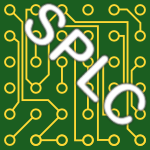29 papers:
 SIGMOD-2015-Haas #data-driven #integration
SIGMOD-2015-Haas #data-driven #integration- The Power Behind the Throne: Information Integration in the Age of Data-Driven Discovery (LMH), p. 661.
 CSCW-2015-Borge-Holthoefer #network #twitter
CSCW-2015-Borge-Holthoefer #network #twitter- Content and Network Dynamics Behind Egyptian Political Polarization on Twitter (JBH, WM, KD, IW), pp. 700–711.
 DUXU-UI-2015-BeltranUPSSSPCA #design #game studies #learning
DUXU-UI-2015-BeltranUPSSSPCA #design #game studies #learning- Inclusive Gaming Creation by Design in Formal Learning Environments: “Girly-Girls” User Group in No One Left Behind (MEB, YU, AP, CS, WS, BS, SdlRP, MFCU, MTA), pp. 153–161.
 ICST-2015-AppeltNB #injection #question #sql
ICST-2015-AppeltNB #injection #question #sql- Behind an Application Firewall, Are We Safe from SQL Injection Attacks? (DA, CDN, LCB), pp. 1–10.
 SAC-2014-CostaKAC #case study #commit #developer
SAC-2014-CostaKAC #case study #commit #developer- Unveiling developers contributions behind code commits: an exploratory study (DAdC, UK, EA, RC), pp. 1152–1157.
 FSE-2014-BaysalHG #information management #issue tracking
FSE-2014-BaysalHG #information management #issue tracking- No issue left behind: reducing information overload in issue tracking (OB, RH, MWG), pp. 666–677.
 ICSM-2013-KwonT #energy #mobile
ICSM-2013-KwonT #energy #mobile- Reducing the Energy Consumption of Mobile Applications Behind the Scenes (YWK, ET), pp. 170–179.
 CSCW-2013-PanTLZLFDW
CSCW-2013-PanTLZLFDW- An exploration on long-distance communications between left-behind children and their parents in China (LP, FT, FL, X(Z, YL, WF, GD, HW), pp. 1147–1156.
 DUXU-WM-2013-BaldassariDPEG #case study #interactive #online #scalability
DUXU-WM-2013-BaldassariDPEG #case study #interactive #online #scalability- Behind Livia’s Villa: A Case Study for the Devolution of Large Scale Interactive “in-site” to “on-line” Application (GLB, ED, SP, JE, HG), pp. 238–247.
 WCRE-2011-HouY #api #case study #evolution
WCRE-2011-HouY #api #case study #evolution- Exploring the Intent behind API Evolution: A Case Study (DH, XY), pp. 131–140.
 KDD-2011-MetwallyP
KDD-2011-MetwallyP- Estimating the number of users behind ip addresses for combating abusive traffic (AM, MP), pp. 249–257.
 CIKM-2010-Kawamae #topic
CIKM-2010-Kawamae #topic- Latent interest-topic model: finding the causal relationships behind dyadic data (NK), pp. 649–658.
 SIGMOD-2009-MaitiDZD #interface #named #web
SIGMOD-2009-MaitiDZD #interface #named #web- HDSampler: revealing data behind web form interfaces (AM, AD, NZ, GD), pp. 1131–1134.
 CIKM-2009-QianLLXSS #community #development #topic #what
CIKM-2009-QianLLXSS #community #development #topic #what- What’s behind topic formation and development: a perspective of community core groups (TQ, QL, BL, HX, JS, PCYS), pp. 1843–1846.
 CHI-2008-Kaneko #detection
CHI-2008-Kaneko #detection- Detecting the direction of listening with the emg signals measured behind ears (NK), pp. 535–538.
 ISMM-2008-SartorHM
ISMM-2008-SartorHM- No bit left behind: the limits of heap data compression (JBS, MH, KSM), pp. 111–120.
 SPLC-2006-Krueger06a #generative #named #product line #tutorial
SPLC-2006-Krueger06a #generative #named #product line #tutorial- Tutorial: New Methods Behind the New Generation of Software Product Line Success Stories (CWK), p. 216.
 CHI-2005-Louca #programming #student #syntax #usability
CHI-2005-Louca #programming #student #syntax #usability- The syntax or the story behind it?: a usability study of student work with computer-based programming environments in elementary science (LTL), pp. 849–858.
 CHI-2005-MarkGH
CHI-2005-MarkGH- No task left behind?: examining the nature of fragmented work (GM, VMG, JH), pp. 321–330.
 ICSE-2005-TilevichS #refactoring
ICSE-2005-TilevichS #refactoring- Binary refactoring: improving code behind the scenes (ET, YS), pp. 264–273.
 CSCW-2004-HalversonEA #evolution #information management #scalability
CSCW-2004-HalversonEA #evolution #information management #scalability- Behind the help desk: evolution of a knowledge management system in a large organization (CH, TE, MSA), pp. 304–313.
 PODS-2003-HullBCS #named
PODS-2003-HullBCS #named- E-services: a look behind the curtain (RH, MB, VC, JS), pp. 1–14.
 SAT-2002-MotterM #on the #performance #proving #satisfiability
SAT-2002-MotterM #on the #performance #proving #satisfiability- On proof systems behind efficient SAT solvers (DM, IM), p. 31.
 WCRE-2001-Sneed #cobol #interface #legacy #source code #xml
WCRE-2001-Sneed #cobol #interface #legacy #source code #xml- Wrapping Legacy COBOL Programs behind an XML-Interface (HMS), p. 189–?.
 TOOLS-USA-1999-Stal
TOOLS-USA-1999-Stal- Behind the Beans (MS), p. 440.
 SAC-1999-RauberR99a #matrix
SAC-1999-RauberR99a #matrix- Matrix Computations Behind the Hierarchical Radiosity Method (TR, GR), pp. 533–540.
 CHI-1989-MacLeanYM #design
CHI-1989-MacLeanYM #design- Design rationale: the argument behind the artifact (AM, RMY, TPM), pp. 247–252.
 CAiSE-1989-Lindgreen #concept
CAiSE-1989-Lindgreen #concept- The Concepts Behind A Systemateque (PL).
 ICSE-1988-YoungTTK #design
ICSE-1988-YoungTTK #design- Design Principles behind Chiron: A UIMS for Software Environments (MY, RNT, DBT, CDK), pp. 367–376.
 SIGMOD-2015-Haas #data-driven #integration
SIGMOD-2015-Haas #data-driven #integration CSCW-2015-Borge-Holthoefer #network #twitter
CSCW-2015-Borge-Holthoefer #network #twitter DUXU-UI-2015-BeltranUPSSSPCA #design #game studies #learning
DUXU-UI-2015-BeltranUPSSSPCA #design #game studies #learning ICST-2015-AppeltNB #injection #question #sql
ICST-2015-AppeltNB #injection #question #sql SAC-2014-CostaKAC #case study #commit #developer
SAC-2014-CostaKAC #case study #commit #developer FSE-2014-BaysalHG #information management #issue tracking
FSE-2014-BaysalHG #information management #issue tracking ICSM-2013-KwonT #energy #mobile
ICSM-2013-KwonT #energy #mobile CSCW-2013-PanTLZLFDW
CSCW-2013-PanTLZLFDW DUXU-WM-2013-BaldassariDPEG #case study #interactive #online #scalability
DUXU-WM-2013-BaldassariDPEG #case study #interactive #online #scalability WCRE-2011-HouY #api #case study #evolution
WCRE-2011-HouY #api #case study #evolution KDD-2011-MetwallyP
KDD-2011-MetwallyP CIKM-2010-Kawamae #topic
CIKM-2010-Kawamae #topic SIGMOD-2009-MaitiDZD #interface #named #web
SIGMOD-2009-MaitiDZD #interface #named #web CIKM-2009-QianLLXSS #community #development #topic #what
CIKM-2009-QianLLXSS #community #development #topic #what CHI-2008-Kaneko #detection
CHI-2008-Kaneko #detection ISMM-2008-SartorHM
ISMM-2008-SartorHM SPLC-2006-Krueger06a #generative #named #product line #tutorial
SPLC-2006-Krueger06a #generative #named #product line #tutorial CHI-2005-Louca #programming #student #syntax #usability
CHI-2005-Louca #programming #student #syntax #usability CHI-2005-MarkGH
CHI-2005-MarkGH ICSE-2005-TilevichS #refactoring
ICSE-2005-TilevichS #refactoring CSCW-2004-HalversonEA #evolution #information management #scalability
CSCW-2004-HalversonEA #evolution #information management #scalability PODS-2003-HullBCS #named
PODS-2003-HullBCS #named SAT-2002-MotterM #on the #performance #proving #satisfiability
SAT-2002-MotterM #on the #performance #proving #satisfiability WCRE-2001-Sneed #cobol #interface #legacy #source code #xml
WCRE-2001-Sneed #cobol #interface #legacy #source code #xml TOOLS-USA-1999-Stal
TOOLS-USA-1999-Stal SAC-1999-RauberR99a #matrix
SAC-1999-RauberR99a #matrix CHI-1989-MacLeanYM #design
CHI-1989-MacLeanYM #design CAiSE-1989-Lindgreen #concept
CAiSE-1989-Lindgreen #concept ICSE-1988-YoungTTK #design
ICSE-1988-YoungTTK #design









